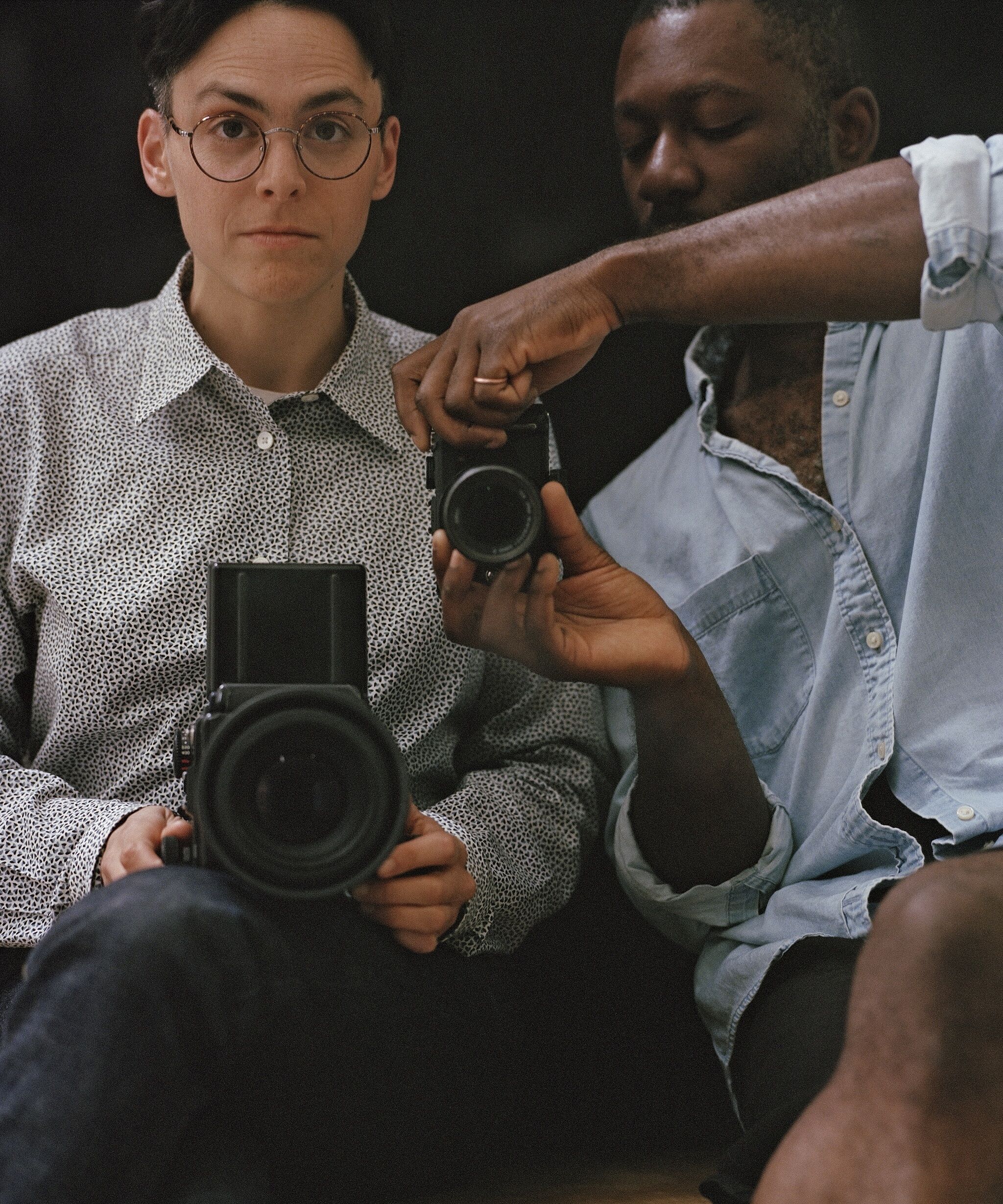Whitney Biennial 2019 | Art & Artists
May 17–Oct 27, 2019
Whitney Biennial 2019 | Art & Artists
Paul Mpagi Sepuya
69
Floor 5
Born 1982 in San Bernardino, CA
Lives in Los Angeles, CA
Since the early 2000s, Paul Mpagi Sepuya has created photographs that emphasize the relationship between artist, camera, and image. The space of his studio has frequently played a major role, with tripods, mirrors, and the camera itself becoming part of the final compositions. To create the works presented in the Biennial, Sepuya expanded his project further, challenging traditional notions of authorship by inviting friends, lovers, and fellow artists to his home or studio to shoot alongside him. The resulting images are portraits of artistic exchange and sometimes physical intimacy. The still-life photographs, which often offer glimpses of his studio, have a particular tenderness to them. In many works bodies appear as fragments—partially reflected in mirrors or obscured by other forms—that ask viewers to imagine what is missing, an act that involves us, too, in the creative exchange the project proposes.
Collaborators:
A.L. Steiner
Clay Kerrigan
Ariel Goldberg
Clifford Prince King
Dicko Chan
Derrick Woods-Morrow
Peter Tomka
James Garcia
Emerson Ricard
Giancarlo Montes Santangelo
Ariel Goldberg, Camera Lesson, 2018
-
0:00
Paul Mpagi Sepuya
0:00
Paul Mpagi Sepuya: Hi, this is Paul Mpagi Sepuya, and this is a project with work by Dicko Chan, James Garcia, Ariel Goldberg, Clay Kerrigan, Clifford Prince King, Giancarlo Montes Santangelo, Emerson Ricard, A.L. Steiner, Peter Tomka, Derrick Woods-Morrow, and myself.
It's been a constant thing in all of the portraits that a certain level of intimacy was the starting point. And I liked the leveling of that. Like, photograph everyone as if they were a current or past or future lover. That's sort of been the starting point.
Narrator: The photographs on view here were taken in Sepuya’s studio, or in makeshift studio spaces he set up. He took some of the pictures, and appears in others, which were taken by friends who are also photographers. The projects and the idea of authorship become intertwined: in some of these pictures, the subject of the photograph was also actively making a photograph, which from our current perspective we can only imagine.
Paul Mpagi Sepuya: There isn't really a title to the project. I don't even know if collaboration is the right word for it. I think part of this is trying to figure out what that language is―all of us have a very different relationship to photography. Some of us are photographers who have gone to either undergraduate or graduate programs, some of us have exhibited, some of us have never, some are self-taught artists who are in the process of pursuing a more formalized photo education, some not.

